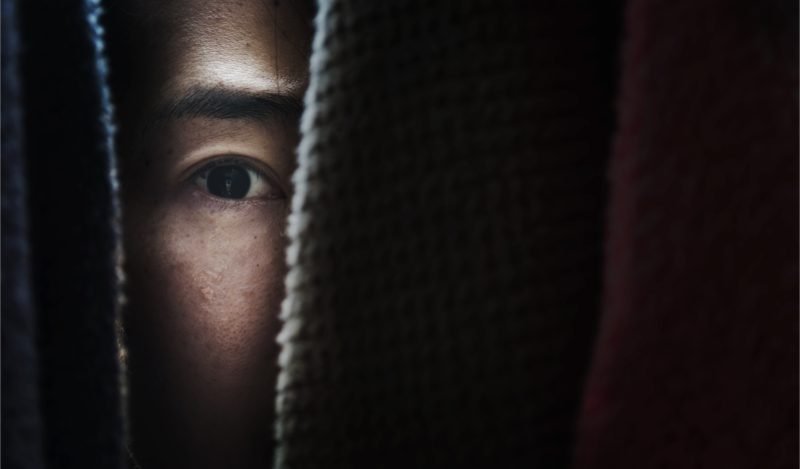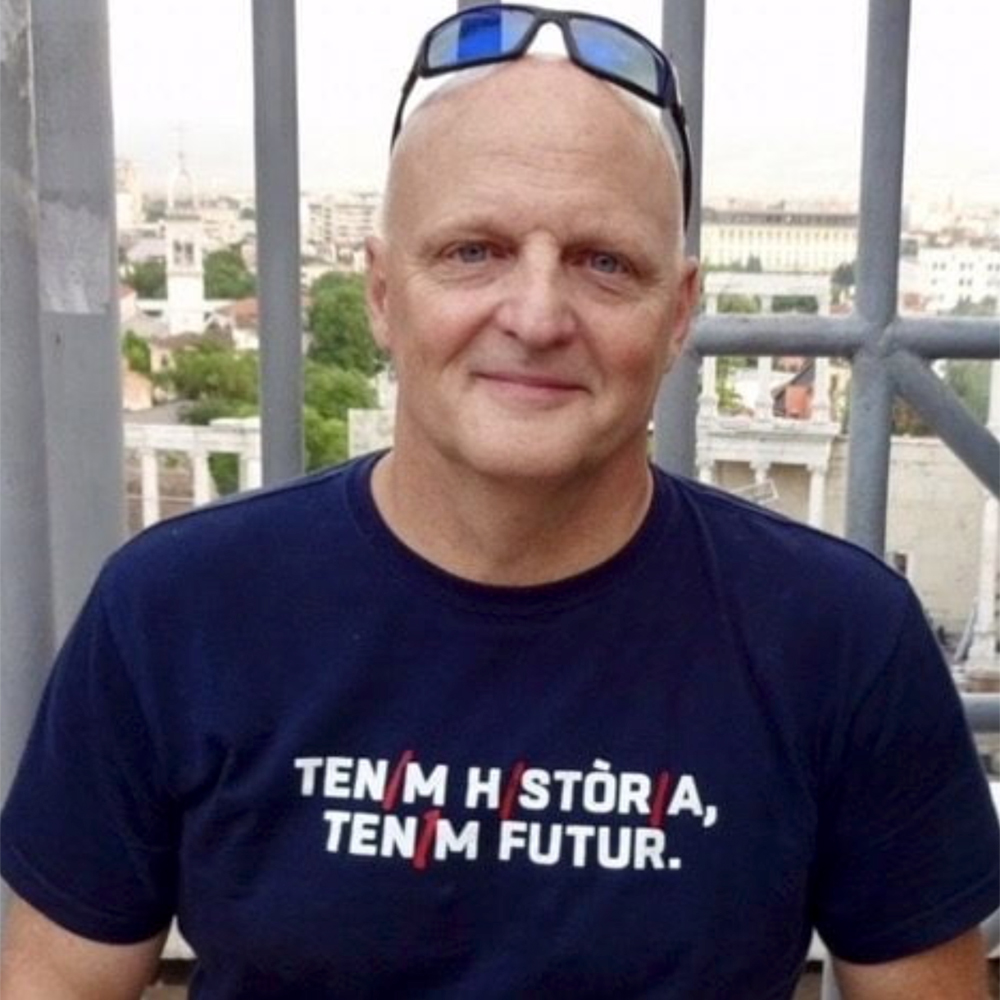They’re all around us, especially those of us who live in relatively prosperous metropolitan neighborhoods in the US or Western Europe. Despite being—at least in material terms—among the most fortunate people who have ever walked the earth, they are very scared. And they want you to be very frightened too.
Indeed, many of them see your refusal to be as frightened as they are about life’s inevitable risks as a grave problem which entitles them and their often powerful and influential fellow travelers to recur to all manner of authoritarian practices to insure that you adhere to their increasingly neurotic view of reality.
This tendency has been in full bloom lately as the people who have sat safely behind their laptops during the last 20 months have harangued and threatened those who have been out on job sites and meatpacking plants mixing freely with others and the virus, to internalize their own obsessions.
And when these supposedly ignorant others—whose storehouse of empirical evidence about the dangers of the virus easily outstrips that of the laptoppers—refuse to buckle to the demand to be scared, they are met with all sorts of opprobrium.
Viewed in historical terms, it’s an odd phenomenon.
For most of recorded time prosperity and education have been the gateway to a life of relative freedom from worry. But now, the people who most enjoy these benefits are, it seems, wracked with anxiety and, in the not infrequent way of many people suffering that plague, and hellbent on sharing their misery with others.
The point here is not to belittle the very real costs of anxiety in the lives of many people, nor to dismiss it as a real public health concern. Rather, it is to ask how and why it is proliferating so rapidly among those who, at least on the surface, have less reason than the vast majority of their fellow human beings to suffer from it.
There are, I think, a number of possible explanations.
One way of explaining the phenomenon is in the context of income inequality and its devastating effects on the shape and size of the upper middle class, and those who still believe they have a realistic chance of joining its ranks. Those who have “made it” into that sub-group are deeply cognizant of the unstable nature of their status in a world of corporate buyouts and rampant layoffs. And they worry that they may not be able to provide their children with the ability to retain what they see, rightly or wrongly, as the only real version of the good life.
Thus, when the people way up on top made the decision following September 11th to make the inducement of fear the cornerstone of political mobilization in an increasingly post-political and post-communal society, they found a ready reserve of support in this anxious if also relatively prosperous cohort of the population.
And after two decades of having their already anxious inner selves massaged daily by an a steady drumbeat of fear (and a diet of Trump as Hitler for dessert) both they and their children fell like ripe fruit into the hands of those that wanted to sell them on the “unprecedented” threat posed by a disease that leaves 99.75% of its victims wonderfully alive.
Adding another layer to this general phenomenon is the increasing isolation of our educated classes from “physicality” in both their work and communal lives.
Until the 1990s it was virtually impossible for anyone other than the richest of the rich not to have any active or passive acquaintance with the world of physical work. Indeed, for the first three or four decades after World War II many of those who could financially afford to relieve their children of this acquaintance with physical work often did not do so, as they believed that knowing what it meant to sweat, ache, be crushingly bored and, not infrequently, humiliated during the course of the day was essential to gaining a more rounded and empathetic understanding of the human condition.
All that ended when the financialization of the economy and the rise of the internet made what Christopher Lasch presciently termed the “rebellion of the elites a much more palpable possibility.”
For example, very few of my students have ever worked during their summers in anything other than office jobs, often procured through family connections. They thus have little understanding, and hence little empathy, of just how brutal and demeaning daily work can be for so many people.
This alienation from the physical can also be seen in family life. The predominant and seldom challenged edict of “go where the money is”—a virtual religion for those seeking upward advancement in US culture—has meant that large numbers of children now grow up far away from their extended families. However, we seldom talk about the built-in costs of subscribing to this ethos.
To talk with and listen to grandparents, uncles and aunts on a regular basis and in person is very different from seeing these people in occasional choreographed holiday rituals, or from time-to-time on Zoom. In the first instance, the child is inserted into a milieu that, for better or worse, structures his understanding of how the world works and forces him to recognize his relationship to both the past, other people and their individual stories.
Might they decide later, for very good reasons, to break for this particular network of narratives? Of course. But when they do so they will at least carry within the idea of a stable and rooted identity as a life goal, something that my discussions with students over the last decade have led me to believe many of them no longer see as a possibility, or even a need.
The increasing distance between those working within the antiseptic confines of the information economy and those still earning their keep with their bodies has, moreover, led many of the former group into a state of enormous confusion regarding the distinction between words and deeds.
To work in academia, as I have for the last three decades, is to be surrounded by people who truly believe that the words one exchanges with others are as existentially weighty and consequential as physical assaults upon the body. This not only shows how few of them have ever been in a real brawl, but how blind they are to the fundamental role that physical violence and/or the looming threat of its use has always played in the game of coercing the many to bend to the will of the few.
And this is why so many of them, parroting the moralizing, if factually tenuous, talking points supplied to them by a deeply corrupt media establishment, are so nonplussed about the physical assaults upon people’s bodies now taking place in the name of “fighting Covid.” It is also why a disturbing number of those whom they teach truly believe that hearing someone utter a critique against an ideological construct that another person told them was good and correct is much more problematic than forcing someone to be injected with an experimental drug under the threat of losing their livelihood.
But perhaps the most significant reason for the rise of the Frightened Class is modern consumer culture’s assault upon the millenary practice of providing the young with what Joseph Campbell called “adequate mythic instructio.” For Campbell myths are, above all, a means of inoculating the young against the angst of knowing we are all destined for decrepitude and death, as well as much inflicted cruelty during that march toward oblivion.
These stories, he suggests, show the young how others have confronted their fears in the past and have learned to find meaning and coherence in the apparent absurdity of their situations. They drive home the message that there is nothing approaching vital plenitude and significant psychological growth without the repeated assumption of risk and a constant engagement with fear. In short, they instill in the young the idea that they are by no means alone in their existential dilemmas.
From the point of view of consumer culture, however, a mythically-anchored person; that is, someone able to place their present struggles in a broad, coherent and historically-informed perspective, is a very troubling thing.
Why?
Because such people are much less amenable to the mostly fear-based pitches that drive the production and consumption of the often nonessential goods upon which the system depends for its continued growth and expansion. If an adolescent has heard stories that underscore the ubiquity of awkward feelings among people of his age, and how so many before them passed through these difficulties and became stronger and wiser, then he is much less likely to pine for the purchase of the “solution” to the problem proffered to him by commercial entities.
It has been said that, over time, we tend to “become what we do.” It seems that after orchestrating campaign after campaign of fear on behalf of the truly powerful, the “literate” comfortable classes have come to believe their own schtick to the point where they have trouble understanding, or even tolerating, those who have always consumed their mercenarily-produced fear porn with a large helping of salt.
Worse yet, these self-frightened elites seem to think they can now remedy their lack of credibility with those living outside their grim prison of angst by simply amping up the volume on the scare machine. I suspect they might be in for a bigger and much more “physical” set of responses than they ever imagined could come their way.
Join the conversation:

Published under a Creative Commons Attribution 4.0 International License
For reprints, please set the canonical link back to the original Brownstone Institute Article and Author.









